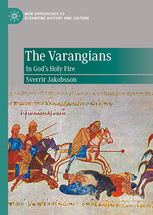The Sigfús Blöndal Memorial Conference on Varangian Studies is scheduled to be held on 21-22 October of 2021 as a part of the research project Legends of the Eastern Vikings at the University of Iceland.
It will take place at the university compound at lovely Laugarvatn (around 80 km distance from the capital Reykjavík). The participants will be able to stay at the university residences at this location during the conference. Busses will transport participants from Reykjavík and back again.
Laugarvatn is a popular resort town, known for its geothermal steam baths, and they also use the hot earth to boil (yes, boil) bread. It is also known for its boarding school, whose main building is a nice example of Icelandic interwar architecture.
The participants at the conference will be the research team for the project, including all MA students who have finished theses related to the project. In addition, three affiliated scholars and three invited guests will take part in the proceedings.




